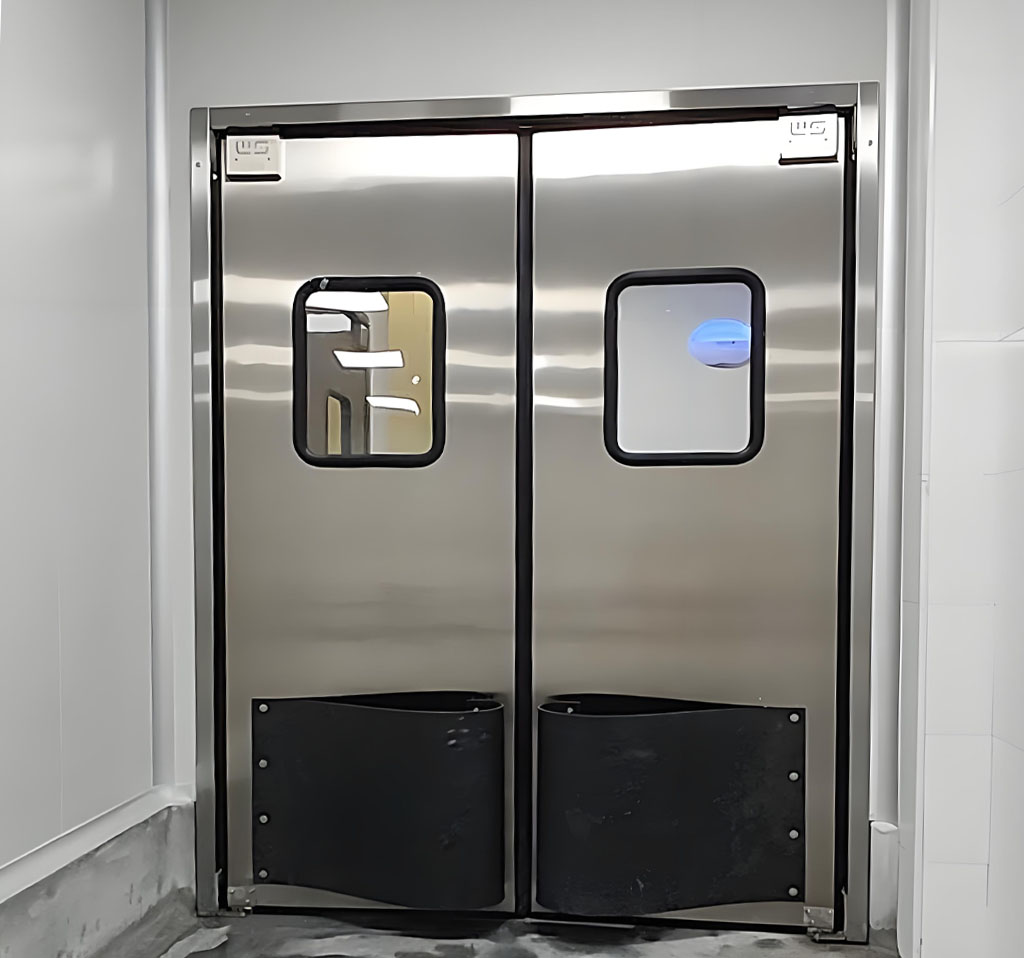The selection of cold storage doors is crucial in cold chain logistics and cold storage operations. Cold storage free doors play an important role in specific scenarios with their unique design. Here are its advantages, disadvantages, and applicable scenarios:

Quick switch: electric/pneumatic control, improves logistics efficiency, suitable for frequent entry and exit.
Low temperature resistance: using antifreeze materials, suitable for environments ranging from -30 ℃ to -60 ℃.
Safe and reliable: equipped with infrared sensing and anti-collision devices to avoid accidents.
Reduce frosting: Good sealing reduces the accumulation of condensed water, making maintenance more convenient.
Dependence on electricity/pneumatic: Power outages or system failures may affect usage.
High maintenance requirements: Regular inspection of components such as motors and sealing strips is required.
Strict installation requirements: The degree of fit affects the insulation effect and smooth operation.
Medical storage: vaccines, drugs, and other temperature sensitive environments.
Supermarket&Central Kitchen: Frequent transportation of goods to reduce air conditioning leakage.
Industrial low-temperature workshop: a work area that requires constant temperature in chemical, electronic, and other industries.

Advantage
Energy saving and efficient: good sealing, reducing air loss, and lowering energy consumption.Quick switch: electric/pneumatic control, improves logistics efficiency, suitable for frequent entry and exit.
Low temperature resistance: using antifreeze materials, suitable for environments ranging from -30 ℃ to -60 ℃.
Safe and reliable: equipped with infrared sensing and anti-collision devices to avoid accidents.
Reduce frosting: Good sealing reduces the accumulation of condensed water, making maintenance more convenient.
Disadvantage
Higher cost: More expensive than traditional cold storage doors.Dependence on electricity/pneumatic: Power outages or system failures may affect usage.
High maintenance requirements: Regular inspection of components such as motors and sealing strips is required.
Strict installation requirements: The degree of fit affects the insulation effect and smooth operation.
Applicable scenarios
Food cold chain: storage of meat, seafood, and other items that require rapid entry and exit.Medical storage: vaccines, drugs, and other temperature sensitive environments.
Supermarket&Central Kitchen: Frequent transportation of goods to reduce air conditioning leakage.
Industrial low-temperature workshop: a work area that requires constant temperature in chemical, electronic, and other industries.


